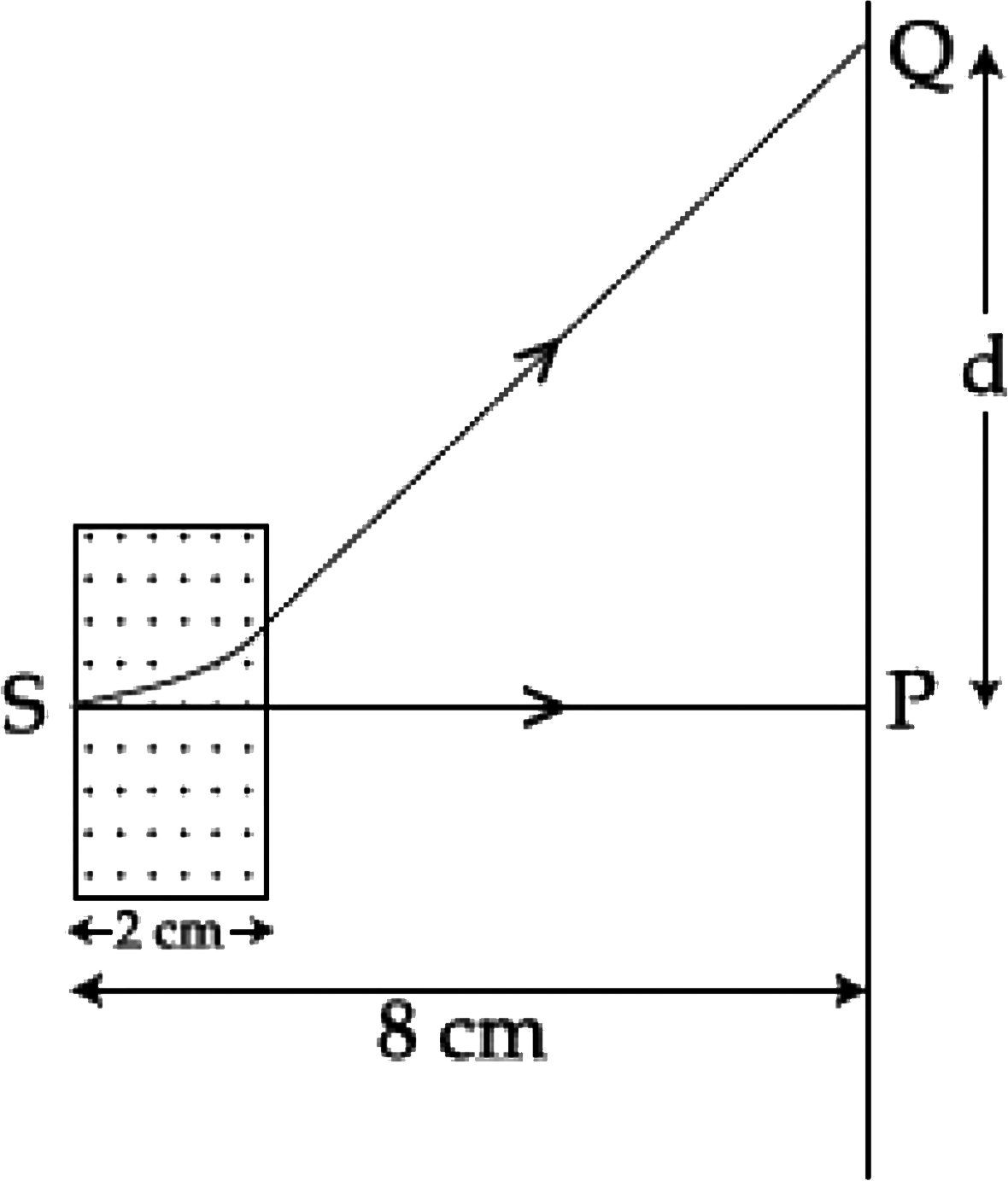If an electron is subjected to a force of 10−25 N is an X-ray machine, then find out the time taken by the electron to cover a distance of 0.2m. Take mass of the electron 10−30 kg.
To solve the problem, we need to find the time taken by an electron to cover a distance of 0.2 m when subjected to a force of 10−25 N. We will use the mass of the electron, which is 10−30 kg.
1. Identify Given Values:
- Force F=10−25N
- Mass of the electron m=10−30kg
- Distance s=0.2m
2. Calculate Acceleration:
- Using Newton's second law, F=m⋅a, we can rearrange it to find acceleration a:
a=Fm
- Substitute the values:
a=10−25N10−30kg=105m/s2
3. Use the Equation of Motion:
- We will use the equation of motion:
s=ut+12at2
- Since the electron starts from rest, the initial velocity u=0. Thus, the equation simplifies to:
s=12at2
4. Substitute Known Values:
- Substitute s=0.2m and a=105m/s2:
0.2=12⋅105⋅t2
5. Solve for t2:
- Rearranging the equation gives:
t2=0.2⋅2105=0.4105
6. Calculate t:
- Now, calculate t:
t2=4×10−1×10−5=4×10−6
t=√4×10−6=2×10−3s
Final Answer:
The time taken by the electron to cover a distance of 0.2 m is 2×10−3 seconds.
---
- Force F=10−25N
- Mass of the electron m=10−30kg
- Distance s=0.2m
- Using Newton's second law, F=m⋅a, we can rearrange it to find acceleration a:
a=Fm
- Substitute the values:
a=10−25N10−30kg=105m/s2
- We will use the equation of motion:
s=ut+12at2
- Since the electron starts from rest, the initial velocity u=0. Thus, the equation simplifies to:
s=12at2
- Substitute s=0.2m and a=105m/s2:
0.2=12⋅105⋅t2
- Rearranging the equation gives:
t2=0.2⋅2105=0.4105
- Now, calculate t:
t2=4×10−1×10−5=4×10−6
t=√4×10−6=2×10−3s
The time taken by the electron to cover a distance of 0.2 m is 2×10−3 seconds.
Similar Questions
A photon of wavelength 400nm strikes a metal surface. The electrons are ejected with a velocity 5.85×105ms−1. Calculate the minimum energy required to remove an electron from the metal surface. The mass of an electron is 9.109×10−31kg.
View SolutionAn electron (mass =9.1×10−31kg, charge =1.6×10−19C) experiences no deflection if subjected to an electric field of 3.2x105Vm, and a magnetic fields of 2.0×10−3Wbm2. Both the fields are normal to the path of electron and to each other. If the electric field is removed, then the electron will revolve in an orbit of radius
View Solution
Knowledge Check
An electron initially at rest falls a distance of 1.5 cm in a uniform electric field of magnitude 2×104N/C. The time taken by the electron to fall this distance is
A1.3×102sB2.1×10−12sC1.6×10−10sD2.9×10−9s
An electron (mass =9.1×10−31kg, charge =1.6×10−19C) experiences no deflection if subjected to an electric field of 3.2x105Vm, and a magnetic fields of 2.0×10−3Wbm2. Both the fields are normal to the path of electron and to each other. If the electric field is removed, then the electron will revolve in an orbit of radius
View SolutionAn electron initially at rest falls a distance of 1.5 cm in a uniform electric field of magnitude 2×104N/C. The time taken by the electron to fall this distance is
View SolutionIn a TV pictgure tubeelectrons re ejected from the cathode with negligible speed and reach a velocity of 5x106 m/s in travelling one centimeter. Assuming straight line motion, find the constant force exerted on the electron. The mass of the electron is 9.1×10−31 kg.
View SolutionIn the Bohr model of hydrogen atom, the electron is treated as a particle going in a circle with the centre at the proton. The proton itself is assumed to be fixed in an inertial frame. The centripetal force is provided by the Coloumb attraction. In the ground state, the electron goes round the proton in a circle of radius 5.3×10−11m. Find the speed of the electron in the ground state. Mass of the electron =9.1×10−31kg and charge of the electron =1.6×10−19C.
View SolutionA n-type silicon sample of width 4×10−3m, thickness 25×10−5m and length 6×10−2m carries a current of 4.8 mA when the voltage is applied across the length of the sample. If the free electron density is 1022m−3, then find how much time does it take for the electrons to travel the full length of the sample? Given that charge on an electron e=1.6×10−19C
View SolutionThe speed of the electron in the hydrogen atom is approximately 2.2×106m/s. What is the centripetal force acting on the electron ifthe radius of the circular orbit is 0.53×10−10m?Mass of the electron is 9.1×10−31kg
View SolutionAn electron moving along the x-axis with an initial energy of 100eV enters a region of magnetic field →B=(1.5×10−3T)ˆk at S (see figure). The field extends between x=0 and x=2cm. The electron is detected at the point Q on a screen placed 8 cm away from the point S. The distance d between P and Q (on the screen) is :
(electron's charge =1.6×10−19C, mass of electron =9.1×10−31kg).
 a) 11.65cm. b) 12.87 cm
c) 1.22cm
d) 2.25cm
a) 11.65cm. b) 12.87 cm
c) 1.22cm
d) 2.25cm
View Solution
